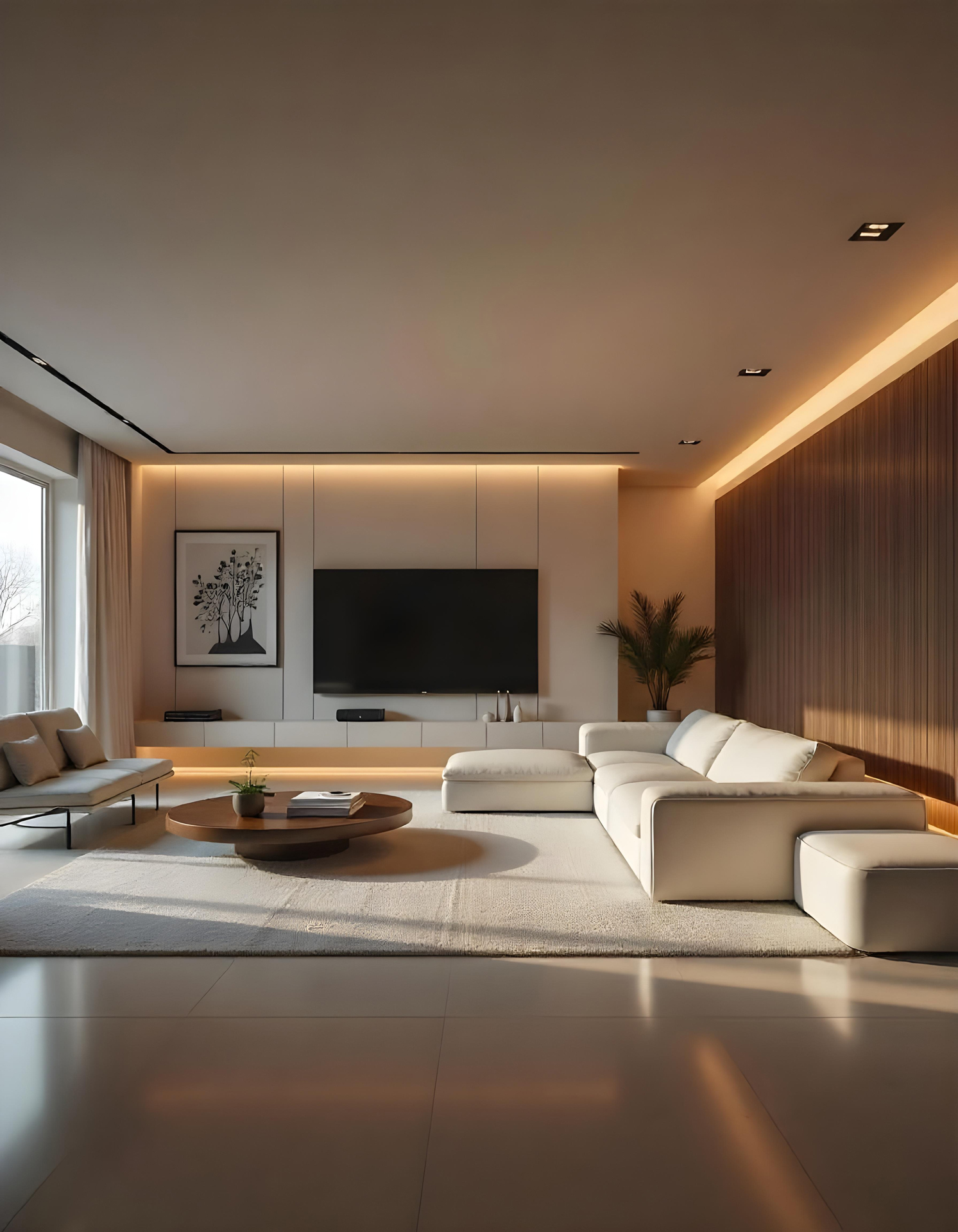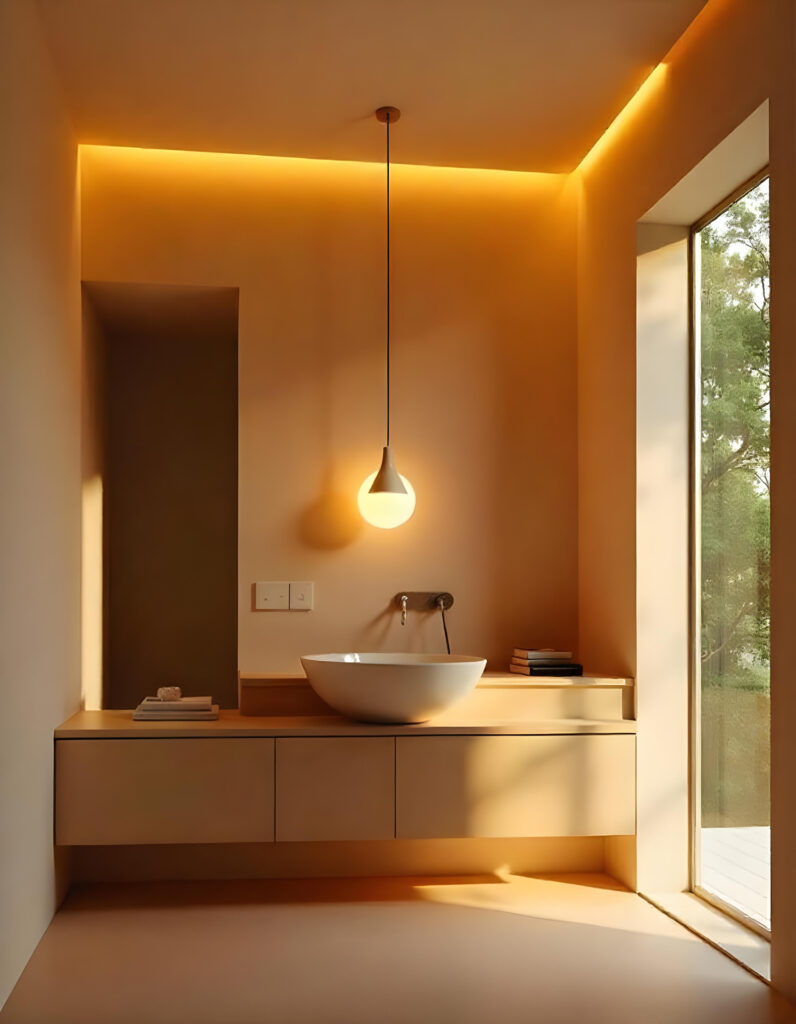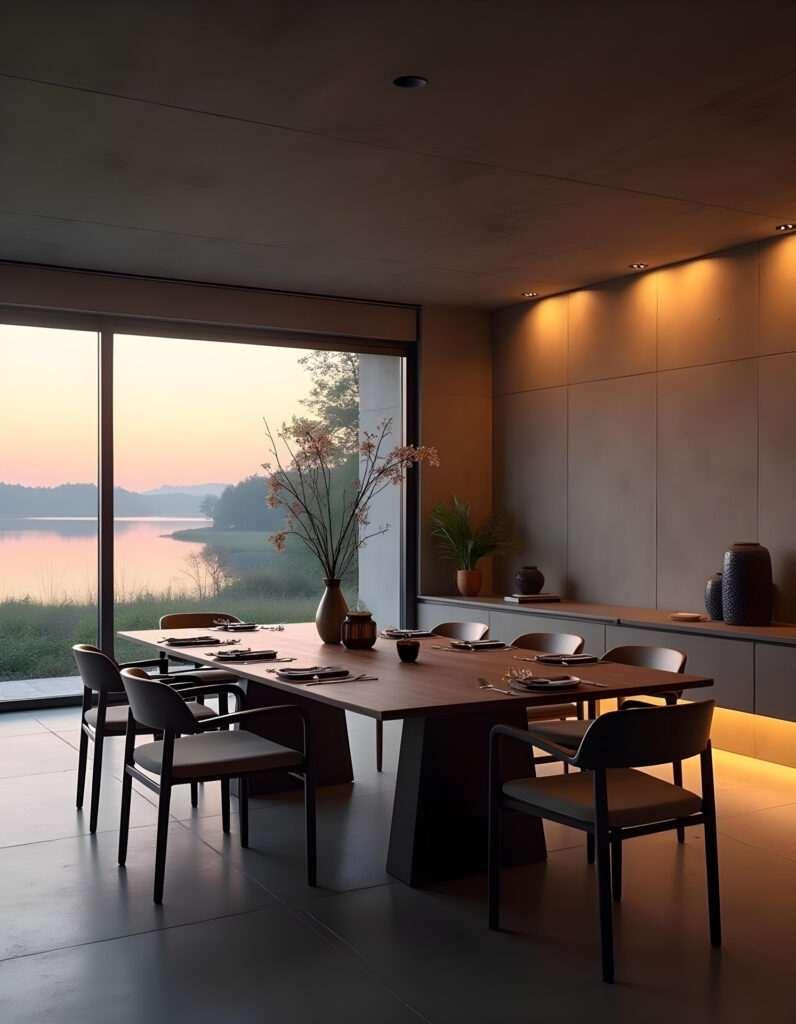WHICH LED DESIGNS ARE USED FOR LUMINAIRES?
- Home
- WHICH LED DESIGNS ARE USED FOR LUMINAIRES?




WHICH LED DESIGNS ARE USED FOR LUMINAIRES?
SMD LED
In the “Surface Mounted Device” (SMD) design, the electronic component, in this case the LED, is soldered directly onto the PCB. The PCB is often a metal core PCB that absorbs and dissipates the heat directly at the LED.
The small design enables miniaturised projection optics, very defined light distributions and narrow aperture angles. SMD LEDs are offered with different spectra, colour temperatures and wattages: High-power and Mid-power LEDs. High-power LEDs usually have a power consumption of 1W or more. Luminaires with Mid-power LEDs have a lower luminance at the light-emitting surface and are therefore particularly suitable for applications where glare control is required.
COB modules
“Chip-on-board” (COB) technology assembles LED chips without their own housing directly on the PCB. The chip is encapsulated to protect against external influences. For lighting purposes, these LED designs are often used together with reflectors. The component of spill light is therefore higher than with SMD LEDs with lens optics. The diameter of the luminous surface of a COB is a characterising feature.
WHAT ARE THE ADVANTAGES OF LEDS?
The use of LEDs in lighting applications has several advantages:
– Very high efficiency in light generation – Long useful life: luminaires can be operated for many years without changing the light source, giving low maintenance costs – Very high functional reliability: LEDs are very robust and shock resistant – Minimal UV and IR components allow reliable conservation applications even for sensitive objects, e.g. in museums and galleries – LEDs can generate coloured light with high saturation, meaning that very large areas (gamuts) can be covered in any colour spaces – Smaller designs of LEDs offer new luminaire design options – LEDs allow highly precise and efficient light control
– Good controllability (dimming): with suitable control gear, very good power control is possible.
WHAT IS BINNING?
When Leds Are Manufactured, Scattering With Regard To Technical Properties Of The Leds Is Unavoidable. For Downstream Marketing, Led Producers Therefore Subsequently Sort Their Leds Into “Bins” According To Defined Measurable Aspects. The Whole Process Is Thus Called Led Binning.
WHAT IS GOOD LED BINNING?
In the context of binning, grouping takes place with a certain spread for the individual characteristics. The smaller the tolerated spread, the more similar are the properties of the binned LEDs. This is also referred to as a “narrower” bin. The spread within a bin therefore determines the consistency of light quality and efficiency for all luminaires manufactured using LEDs from that bin.
What is the Colour Rendering Index (CRI)?
Put simply, the Colour Rendering Index (CRI) measures the ability of a light source to accurately reproduce the colours of the object it illuminates. This is a seemingly simple definition, but there is a lot going on, so we’ll help break it down into three parts
What is considered high CRI?
CRI is calculated as a value with a maximum possible score of 100. A CRI score of 95 or above is considered very high, and indicates that a light source will make objects appear very similar to how they would look under natural lighting conditions.
CRI can be further broken down into sub-scores known as “R” values, which also have a maximum of 100. Each R value represents the light source’s colour rendering ability for a particular colour or shade.
The most common definition of CRI Ra is simply an average of the first 8 R values (R1 through R8). Other R values such as R9 and R12 are critical colour samples that represent deep red and saturated blue, but are unfortunately not included in the regular CRI Ra calculation.
WHAT IS COLOUR CONSISTENCY (SDSCM)?
The Sdcm (Standard Deviation Of Colour Matching) Value Describes The Colour Consistency (Colour Location Deviation) Of Light Sources Using The Macadam Ellipses As Defined By David Macadam.
WHAT IS LED COLOUR CONSISTENCY?
The colour consistency stipulates how close the actual light colour of an LED is to the defined colour location. When selecting luminaires, lighting designers should ensure that the colour consistency of the luminaires used is as high as possible. This is particularly important when, for example, wall washing is carried out with several luminaires. On a white wall, even small colour location deviations between the luminaires can be noticed. The unitless SDCM value is used to evaluate colour consistency.
WHAT IS LUMINOUS FLUX MAINTENANCE?
Leds, As With Other Light Sources, Are Subject To Ageing, Causing The Luminous Flux Produced To Somewhat Decrease. The Led Luminous Flux Maintenance Is A Statistical Parameter That Describes How Much Of The Original Luminous Flux Is Still Emitted After A Specific Number Of Operating Hours. This Decrease Is Indicated Via The L And B Values As Well As The Operating Hours In Consideration. Both The L Value And B Value Provide No Information About The Very Rare Total Failure Of An Led, The So-Called “Failure Rate”.
Aadh Lights
Office
- Perinjanam, Thrissur, Kerala, India - 680686
- info@aadhlights.com
- +91 95267 17771
